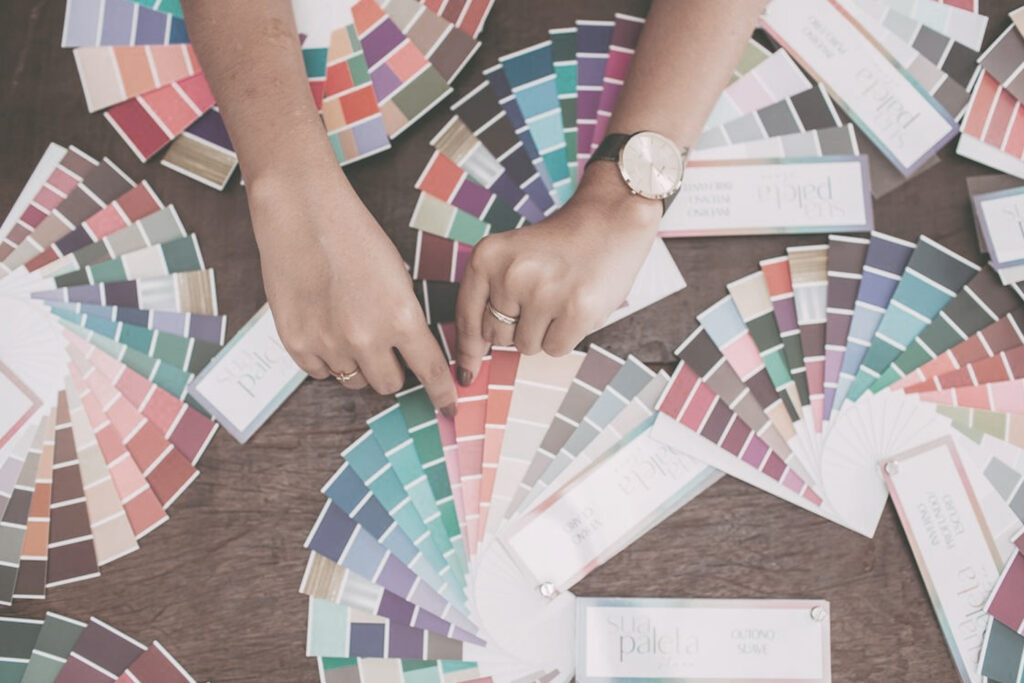The power of colour can transform a person’s appearance and how they are perceived. The right colour can brighten one’s appearance, then on the other hand some colours can drain and wash out an individuals complexion. In this post we will go step my step at finding which season and colour analysis group you fit into. This post will also cover tips and tricks to finding more information about your personal colour palette.
A colour analysis is a fun and accurate tool to have for your personal colour palette, beauty and fashion style. However everyone is unique and you can choose to wear whatever colour and style of hair or makeup you love and feel comfortable in. A colour analysis is a helpful tool for some people to find their identity are style choice and is viewed as a fun topic.
1. Find your Undertone

Have a look at the veins on your wrist. Do they appear more blue or green? Veins that look blue, tell that you have a cool undertone. Veins that appear more green, indicate a warm undertone. If you find yourself having a mix of both green & blue, then you have a neutral undertone. It’s good to note however, that if you are a neutral tone, statistically most people will lean either more warm or cool.
2. Colour swatch your skin

Take a photo of either your face or the underneath of your arm. Take these photos with no makeup or fake tan, make sure the photos are taken in natural lighting. You can then use these images to switch colours to give you a more in depth sense into your colouring. You can use apps and websites to swatch colours from photos. If you happen to have a software such as photoshop this can also be helpful, but for swatching you can access easily through free apps and websites. Some makeup brands have foundation finders that can do this for you as well.
3. Look at your key colouring features

Hair, skin and eyes are the main key points for figuring out your colouring and season. Identify the colours of each one, but be specific of the main colour, shade, brightness, darkness, intensity and what tone they are. Again make sure to do this with a bare face, so no makeup and no fake tanners, best in natural light. Also consider if you have altered your hair colour, try and base this analysis on your natural colour.
4. Take a look at your timeline
If possible take a look at photos of yourself at a young age being a child, compare to photos of your current age. Some people’s hair colour or skin, and even eye colour change as they get older. It’s best to base your colour analysis on present you, however taking a look at childhood photos may give more insight to your colour analysis.
5. Contrast
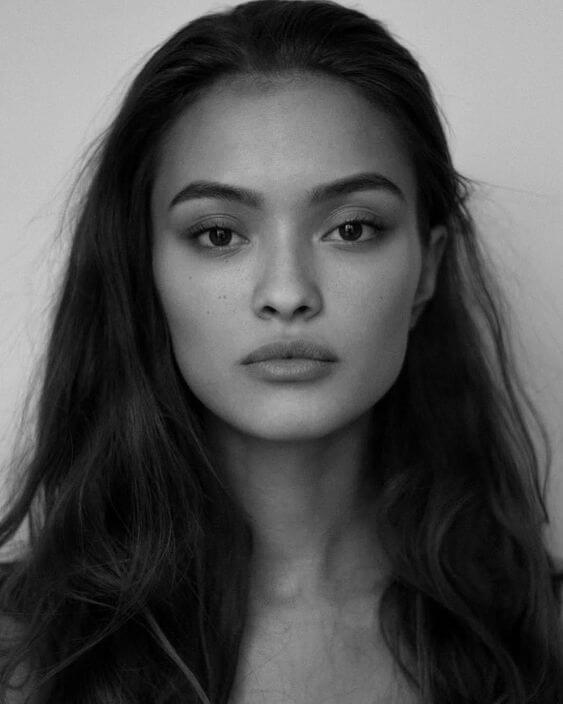
What is the contrast of your main three features, hair, skin and eyes? Do your features appear light or dark? It’s quite straight forward to get an idea, dark hair with light skin and brown eyes is contrasting, then on the other end of the scale an example could be bleach blonde hair with light skin is low contrast because the features are similar to one another.
A good tip for this is to take your natural selfie and edit it black and white, this will give you a clearer idea of your contrast levels.
6. Four Seasons
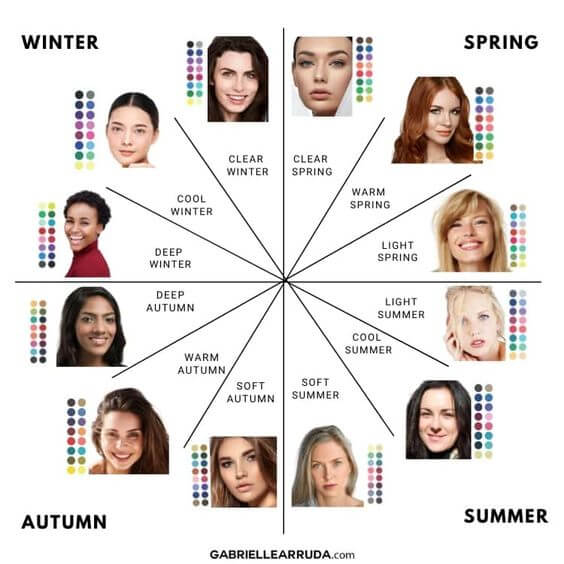
Using all the data you have collected, categorise which elements of your colour analysis fit into the four seasons; Autumn, Winter, Spring and Summer.
A good rule to first go with is using your undertone. If you have more of a cool undertone you will be either a Winter or Summer. Then a warm undertone, would fit into either Autumn or Spring.
7. Which one of the two seasons?
Winter or Summer?
- Winters usually have more contrast, look best in bright colours and have a more saturated colour pallet to the face. They Can pull off very dark hair colours or very light cool hair colours.
- Summers are usually more muted and less bright than a winter. They pull off more medium hair colours and need a balance of contrast, summers can pull off dark shades of brown, but too dark may be too much.
Autumn or Spring?
- Autumns can pull off more muted colours and suit earthy colours. Autumns usually have medium to dark features that blend together more.
- Springs are lighter compared to autumn, they suit more brighter and fresher colours. Springs will have less contrast similar to autumn, but the difference is mostly that they have brighter and lighter facial features.
8. Another Angle
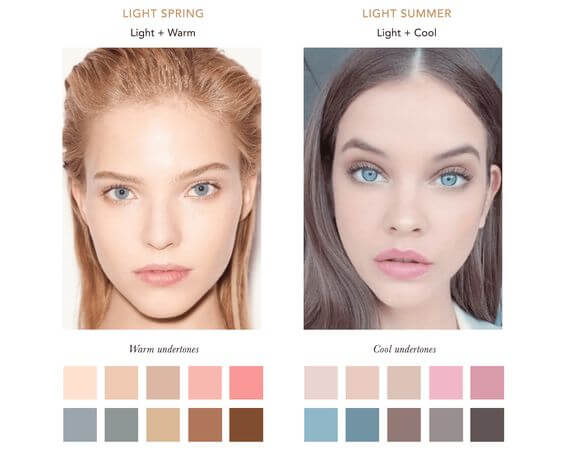
Another way to look at it is working backwards kind of. Think of Spring and summer as siblings but one is warm (spring) and one is cool (summer). Then again Autumn and Winter are siblings, but one is warm (Autumn) and one is cool (winter)
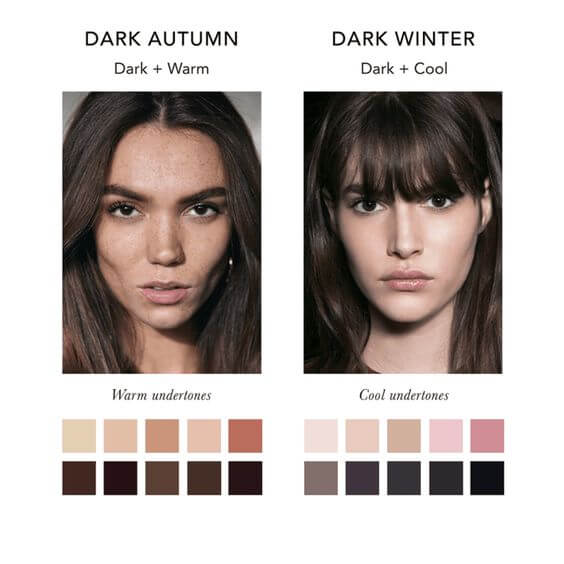
9. Sub Categories
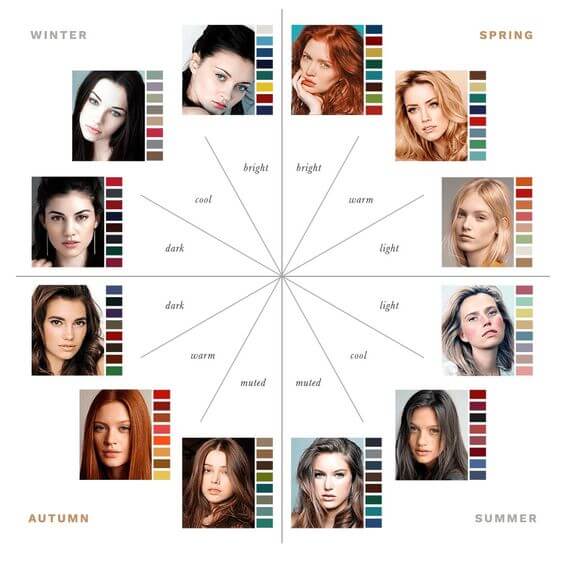
Once you know your season, it can then get a little more complicated if you want a specific colour analysis for the sub category of your season. I’ll include an image as this will explain it best.
10. Celebrities & Examples

Take a look at celebrities in the same season. This will give you more of an insight and broader idea of what colours look best. It’s a good tool, however keep in mind not all celebrities wear colours that fit their colour analysis, or have the perfect hair dyed to their analysis. I’ll include some image examples which will explain it best.

A lot of celebrities have had colour analysis professionally done, or they have stylists and beauty experts that have an eye for knowing what works best for a person.
Colour analysis can be done at home with the correct knowledge, as demonstrated in this post.

If you are still unsure or want a specific look at individual colours that suit your unique pallet, Its recommended to go see an in person colour analyst. This is a really fun experience and goes much more in depth and personal. However once you know your season, you will be able to have a specific idea of what colours will work best.

Thanks for reading!
Hopefully after reading this post you feel more confident in understanding your personal colour palette.

